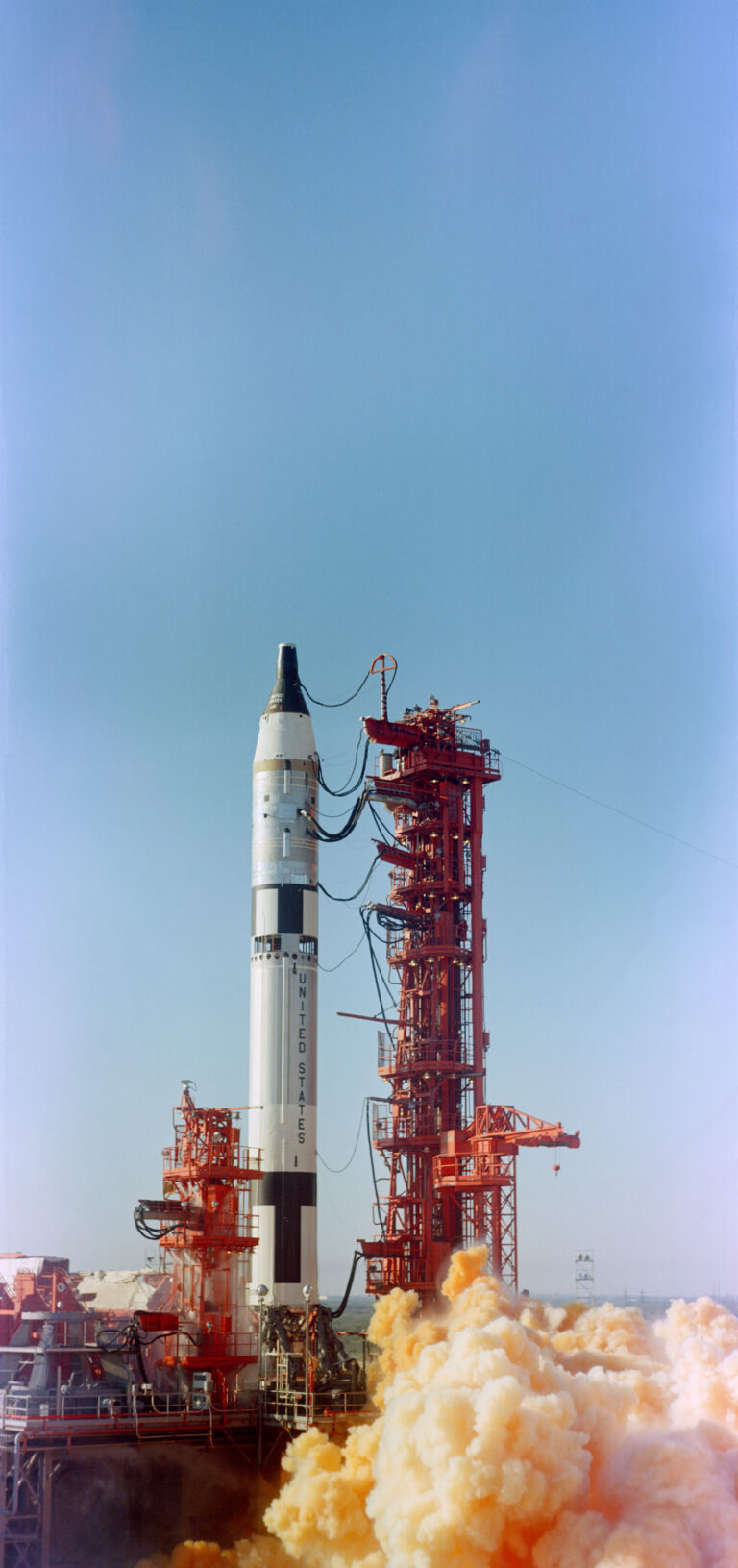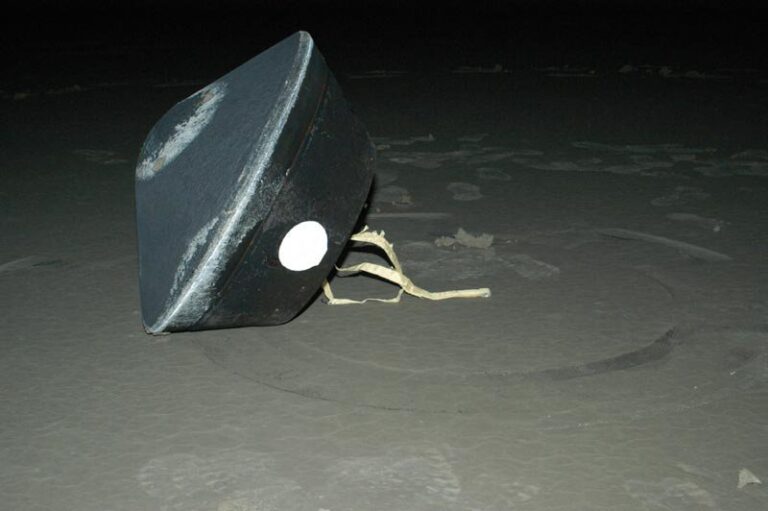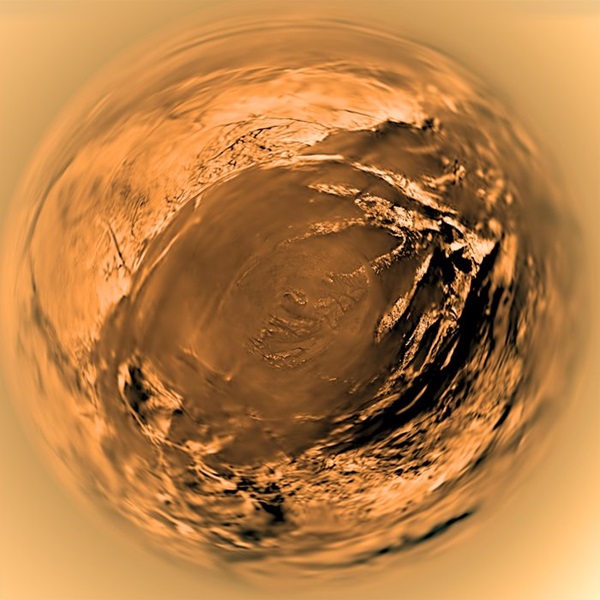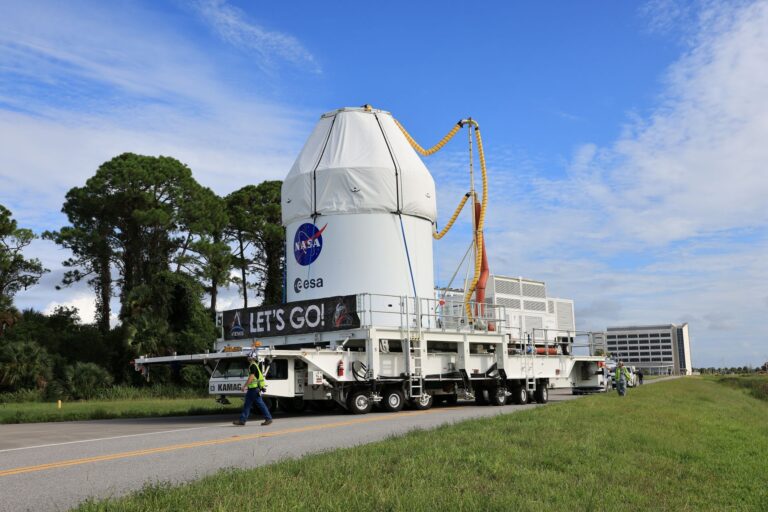NASA’s solar-powered Juno spacecraft lifted off from Cape Canaveral Air Force Station at 12:25 p.m. EDT Friday to begin a 5-year journey to Jupiter.
Juno’s detailed study of the largest planet in our solar system will help reveal Jupiter’s origin and evolution. As the archetype of giant gas planets, Jupiter can help scientists understand the origin of our solar system and learn more about planetary systems around other stars.
“Today, with the launch of the Juno spacecraft, NASA began a journey to yet another new frontier,” NASA Administrator Charles Bolden said. “The future of exploration includes cutting-edge science like this to help us better understand our solar system and an ever-increasing array of challenging destinations.”
After Juno’s launch aboard an Atlas V rocket, mission controllers now await telemetry from the spacecraft indicating it has achieved its proper orientation, and that its massive solar arrays, the biggest on any NASA deep-space probe, have deployed and are generating power.
“We are on our way, and early indications show we are on our planned trajectory,” said Jan Chodas, Juno project manager at NASA’s Jet Propulsion Laboratory in Pasadena, California. “We will know more about Juno’s status in a couple hours after its radios are energized and the signal is acquired by the Deep Space Network antennas at Canberra.”
Juno will cover the distance from Earth to the Moon (about 250,000 miles [402,000 kilometers]) in less than one day’s time. It will take another 5 years and 1,740 million miles (2,800 million km) to complete the journey to Jupiter. The spacecraft will orbit the planet’s poles 33 times and use its collection of eight science instruments to probe beneath the gas giant’s obscuring cloud cover to learn more about its origins, structure, atmosphere, and magnetosphere, and look for a potential solid planetary core.
With four large moons and many smaller moons, Jupiter forms its own miniature solar system. Its composition resembles a star’s, and if it had been about 80 times more massive, the planet could have become a star instead.
“Jupiter is the Rosetta stone of our solar system,” said Scott Bolton, Juno’s principal investigator from the Southwest Research Institute in San Antonio, Texas. “It is by far the oldest planet, contains more material than all the other planets, asteroids, and comets combined, and carries deep inside it the story of not only the solar system but of us. Juno is going there as our emissary — to interpret what Jupiter has to say.”
Juno’s name comes from Greek and Roman mythology. The god Jupiter drew a veil of clouds around himself to hide his mischief, but his wife, the goddess Juno, was able to peer through the clouds and reveal Jupiter’s true nature.
NASA’s solar-powered Juno spacecraft lifted off from Cape Canaveral Air Force Station at 12:25 p.m. EDT Friday to begin a 5-year journey to Jupiter.
Juno’s detailed study of the largest planet in our solar system will help reveal Jupiter’s origin and evolution. As the archetype of giant gas planets, Jupiter can help scientists understand the origin of our solar system and learn more about planetary systems around other stars.
“Today, with the launch of the Juno spacecraft, NASA began a journey to yet another new frontier,” NASA Administrator Charles Bolden said. “The future of exploration includes cutting-edge science like this to help us better understand our solar system and an ever-increasing array of challenging destinations.”
After Juno’s launch aboard an Atlas V rocket, mission controllers now await telemetry from the spacecraft indicating it has achieved its proper orientation, and that its massive solar arrays, the biggest on any NASA deep-space probe, have deployed and are generating power.
“We are on our way, and early indications show we are on our planned trajectory,” said Jan Chodas, Juno project manager at NASA’s Jet Propulsion Laboratory in Pasadena, California. “We will know more about Juno’s status in a couple hours after its radios are energized and the signal is acquired by the Deep Space Network antennas at Canberra.”
Juno will cover the distance from Earth to the Moon (about 250,000 miles [402,000 kilometers]) in less than one day’s time. It will take another 5 years and 1,740 million miles (2,800 million km) to complete the journey to Jupiter. The spacecraft will orbit the planet’s poles 33 times and use its collection of eight science instruments to probe beneath the gas giant’s obscuring cloud cover to learn more about its origins, structure, atmosphere, and magnetosphere, and look for a potential solid planetary core.
With four large moons and many smaller moons, Jupiter forms its own miniature solar system. Its composition resembles a star’s, and if it had been about 80 times more massive, the planet could have become a star instead.
“Jupiter is the Rosetta stone of our solar system,” said Scott Bolton, Juno’s principal investigator from the Southwest Research Institute in San Antonio, Texas. “It is by far the oldest planet, contains more material than all the other planets, asteroids, and comets combined, and carries deep inside it the story of not only the solar system but of us. Juno is going there as our emissary — to interpret what Jupiter has to say.”
Juno’s name comes from Greek and Roman mythology. The god Jupiter drew a veil of clouds around himself to hide his mischief, but his wife, the goddess Juno, was able to peer through the clouds and reveal Jupiter’s true nature.










